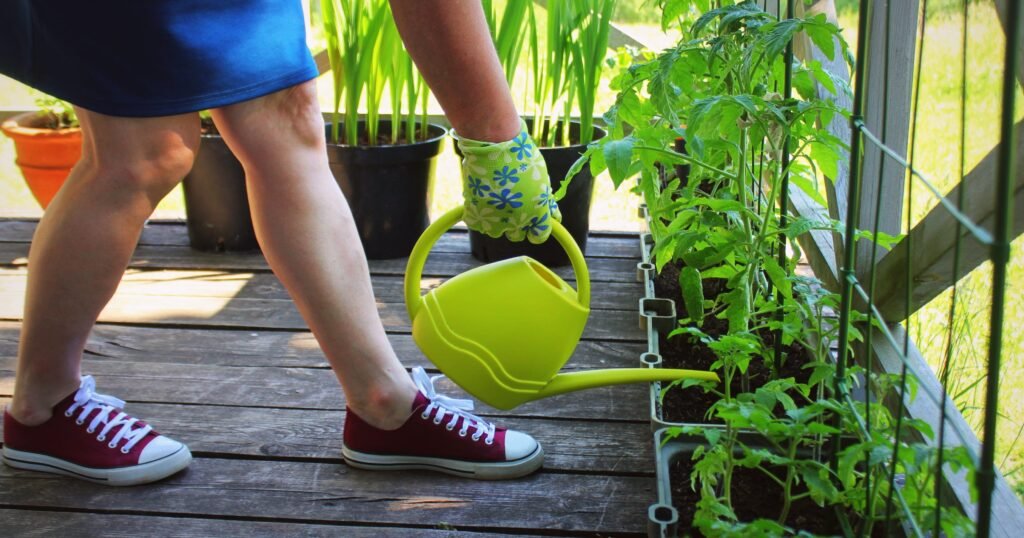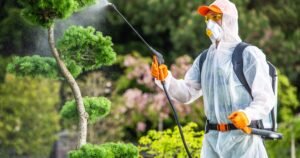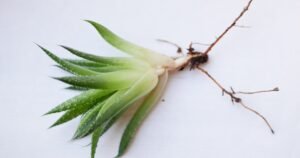Plants that like Self-Watering Pots:
- African violets
- Peace lily
- Snake plant
- Jade plant
- Spider Plant
- Calatheas
- Radiator plants
- Umbrella palm
- Sword fern
Self-watering pots, also known as sub-irrigation planters, have gained popularity among novice and experienced gardeners due to their efficiency and convenience in plant care.
These innovative containers have a reservoir that holds water, allowing the plants to absorb moisture as needed. In this guide, we’ll delve into the well-suited plants for self-watering pots and explore the benefits of using this watering system.
African Violets
Plants that like Self-Watering Pots? African Violets (Saintpaulia) are small, perennial flowering plants native to Tanzania and adjacent southeastern Kenya.
They are well-adapted to indoor conditions, making them popular for home gardeners.
One of their peculiarities is their preference for being watered from below to avoid getting their leaves wet.
This makes them an excellent candidate for self-watering pots.
The constant supply of water at the roots, coupled with the absence of water on the leaves, ensures that the African Violets thrive.

Peace Lilies
Plants that like Self-Watering Pots? Peace Lilies (Spathiphyllum) are another plant species that positively respond to self-watering pots.
These tropical plants are renowned for their ability to survive in low-light conditions and their air-purifying qualities.
They require a consistent water supply to prevent the soil from drying out entirely, but overwatering can lead to root rot.
Using self-watering pots mitigates these watering issues, providing a balanced moisture level that Peace Lilies prefer.
Spider Plants
Spider Plants (Chlorophytum Comosum) are distinguished by their variegated, linear foliage and cascading nature.
They are remarkably hardy and adaptable, thriving in various conditions.
However, they are prone to root rot if overwatered and can withstand short periods of drought.
A self-watering pot is an excellent choice for Spider Plants as it provides the ideal watering balance, reducing the risk of root rot while ensuring the plant receives adequate moisture.
1. Understanding Self-Watering Pots
How Self-Watering Pots Work:
- Self-watering pots consist of a water reservoir at the bottom and a growing area at the top.
- The reservoir is separated from the planting area by a water-permeable barrier.
- A wicking system, often made of wicking fabric or a wick-like material, connects the reservoir to the soil, allowing water to be drawn up by capillary action as the plant needs it.
Advantages of Self-Watering Pots:
- Efficient Watering: Self-watering pots provide a consistent and efficient way to water plants, ensuring they receive the right amount of moisture without the risk of overwatering or underwatering.
- Reduced Maintenance: These pots require less frequent watering, making them ideal for busy individuals or those who regularly forget to water their plants.
- Prevention of Root Rot: By avoiding waterlogging, self-watering pots help prevent root rot, a common issue in traditional pots where excess water accumulates at the bottom.
- Better Nutrient Retention: The water reservoir allows the plant to absorb essential nutrients that may leach from the soil, promoting healthier growth.

2. Plants Suitable for Self-Watering Pots
Herbs:
- Basil: Basil thrives in self-watering pots, enjoying consistent moisture without becoming waterlogged.
- Mint: Mint appreciates the regulated watering provided by self-watering pots, promoting robust growth and flavor.
Succulents and Cacti:
- Aloe Vera: Aloe Vera can thrive in self-watering pots, benefiting from controlled moisture levels that prevent overwatering.
- Sedum: Various Sedum species, known for their water-storing capabilities, do well in self-watering containers.
Leafy Greens:
- Lettuce: Lettuce varieties, including romaine and butterhead lettuce, grow well in self-watering pots due to their consistent water needs.
- Spinach: Spinach is another leafy green that appreciates the even moisture levels offered by self-watering containers.
Peppers and Tomatoes:
- Cherry Tomatoes: Cherry tomato plants can thrive in self-watering pots, benefitting from consistent moisture as they grow and fruit.
- Bell Peppers: Bell peppers do well in self-watering containers, ensuring they receive adequate water for healthy growth and fruiting.
Spider Plant (Chlorophytum comosum):
- Spider plants are well-suited for self-watering pots, as they prefer consistently moist soil without being waterlogged.
Peace Lily (Spathiphyllum):
- Peace lilies thrive in self-watering pots, appreciating the consistent moisture levels that promote lush foliage and occasional blooms.
Pothos (Epipremnum aureum):
- Pothos, a popular indoor plant, can do well in self-watering pots, benefitting from controlled watering to prevent root rot.

3. Tips for Using Self-Watering Pots
Monitor Water Levels:
- Regularly check the water level in the reservoir to ensure it is adequately filled. Different plants have varying water requirements, so adjust the water level accordingly.
Use Well-Draining Soil:
- Fill the growing area of the pot with well-draining soil to optimize the capillary action and prevent waterlogging.
Be Mindful of Plant Size:
- Choose an appropriately sized self-watering pot based on the plant’s size and growth habits. Avoid overcrowding to ensure the plant can access sufficient water.
Adapt Based on Climate:
- Adjust the water level and refilling frequency based on the climate and season. Plants may need more water during hot, dry periods.
Regular Cleaning and Maintenance:
- Clean the reservoir and wicking system periodically to prevent blockages and maintain the functionality of the self-watering pot.
Consider Fertilizing:
- Since the water in the reservoir may dilute nutrients, consider adding a balanced liquid fertilizer to ensure your plants receive adequate nutrients.

4. Final Thoughts
Self-watering pots provide an excellent solution for maintaining optimal plant moisture levels. You can create a thriving garden or indoor plant collection with minimal effort by understanding how these pots work and selecting suitable plants that align with their watering system. Remember to monitor water levels, choose appropriate soil, and maintain your self-watering pots to enjoy healthy and lush plants year-round. Whether beginner or experienced, incorporating self-watering pots into your gardening routine can simplify plant care and lead to flourishing greenery.
Conclusion
Plants that like Self-Watering Pots? In conclusion, self-watering pots present a practical and efficient solution for individuals looking to maintain healthy and vibrant plants with less effort. Their ability to regulate water supply, prevent root rot, and retain essential nutrients makes them an excellent choice for various plants, from herbs and leafy greens to succulents and indoor plants. You can make the most of these innovative potting systems with a good grasp of their functioning, appropriate use, and regular monitoring and maintenance. Whether a gardening novice or a seasoned green thumb, self-watering pots can help you achieve a lush and thriving garden or interior plant ensemble. Leverage the additional resources to expand your knowledge and skills.
FAQs
What plants do best in self-watering pots?
Plants that thrive in self-watering pots typically prefer consistent moisture levels. These include herbs like basil, parsley, and mint, leafy greens like lettuce and spinach, and indoor plants like pothos and peace lilies. Succulents like jade and sedum can also do well, as the pots control moisture and prevent overwatering. Always ensure your plant is suited to the consistent moisture provided by a self-watering pot.
Are self-watering pots good for all plants?
While self-watering pots benefit many plants, they might not be the best choice for all. Some plants prefer dry soil between waterings or have specialized watering needs that these pots may not accommodate. Always research the specific needs of each plant species before deciding on the best potting system.
Which herbs are self-watering pots?
Herbs that appreciate consistent moisture, such as basil, parsley, and mint, thrive in self-watering pots. These pots provide a steady water supply, preventing the soil from drying and ensuring these moisture-loving herbs flourish. However, it’s essential to monitor for signs of overwatering, like yellowing leaves, and adjust the water levels accordingly.












